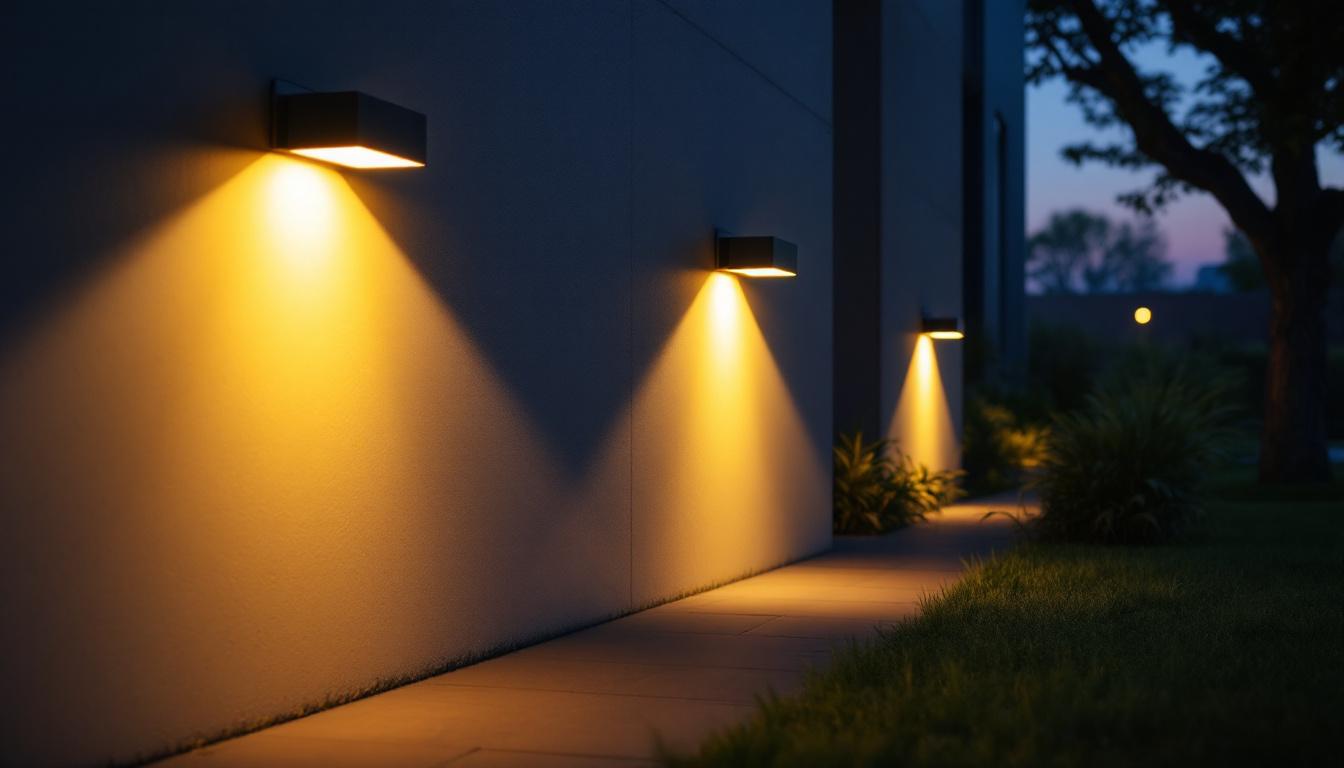
Lighting is an essential aspect of any construction or renovation project, and understanding the various switches for lights is crucial for lighting contractors. This article delves into everything a lighting contractor should know about light switches, from types and functionality to installation tips and safety considerations.
Light switches serve as the primary control mechanism for lighting fixtures in residential and commercial spaces. They allow users to turn lights on and off, and with advancements in technology, they now offer a range of features that enhance convenience and energy efficiency. Understanding the basic functions and types of switches is vital for any lighting contractor.
There are several types of light switches available, each designed for specific applications and user preferences. The most common types include toggle switches, rocker switches, dimmer switches, and smart switches. Familiarity with these types can help contractors recommend the best options to their clients.
Toggle switches are perhaps the most traditional type, characterized by a lever that clicks up or down. Rocker switches, on the other hand, have a more modern aesthetic and are often used in contemporary designs. Dimmer switches allow users to adjust the brightness of the lights, providing flexibility in ambiance and energy consumption. Lastly, smart switches integrate with home automation systems, enabling remote control and scheduling through smartphones or voice commands.
Beyond basic on/off functionality, many light switches now come equipped with additional features. For instance, dimmer switches not only adjust brightness but can also help save energy and extend the lifespan of light bulbs. Smart switches often include programmable settings, allowing users to create schedules or control lights remotely.
Understanding these functionalities can help lighting contractors provide valuable advice to clients, ensuring they choose switches that meet their specific needs and preferences. For example, a client interested in energy efficiency may benefit from dimmers or smart switches that can be programmed to turn off automatically when not in use.
In addition to these features, many modern light switches now offer compatibility with various lighting technologies, including LED and CFL bulbs. This is particularly important as energy-efficient lighting becomes more prevalent. Some switches even come with built-in occupancy sensors that automatically turn lights on when someone enters a room and off when they leave, further enhancing energy savings and convenience. Such innovations not only contribute to a more sustainable environment but also cater to the growing demand for smart home solutions.
Moreover, the aesthetic appeal of light switches has evolved significantly. Many manufacturers now offer customizable faceplates and finishes, allowing homeowners to match their switches to their interior decor seamlessly. This attention to design ensures that functionality does not compromise style, making it easier for contractors to meet the diverse tastes of their clients. Understanding the intersection of technology and design is crucial for contractors aiming to provide comprehensive lighting solutions that are both practical and visually appealing.
Proper installation of light switches is critical for functionality and safety. Lighting contractors must be familiar with electrical codes and standards to ensure compliance during installation. Additionally, understanding the wiring and circuit requirements for different types of switches is essential.
When installing a light switch, it is crucial to understand the basic wiring configurations. Most switches operate on a simple circuit, where a hot wire connects to the switch and then to the light fixture. In some cases, a neutral wire may also be required, especially for smart switches that need constant power.
Contractors should always ensure that the power is turned off at the circuit breaker before beginning any installation work. This precaution not only protects the contractor but also ensures the safety of future users. Additionally, using the correct gauge wire is essential to prevent overheating and potential fire hazards. It is also advisable to familiarize oneself with the specific requirements for different types of switches, such as three-way or dimmer switches, which may have unique wiring needs that differ from standard single-pole switches.
The placement and mounting of light switches are equally important. Typically, switches should be installed at a height of about 48 inches from the floor, making them accessible for most users. However, in commercial settings or for specific user needs, this height may need to be adjusted.
Contractors should also consider the location of switches in relation to doorways and furniture. A switch that is difficult to reach or obscured by furniture can lead to frustration and decreased usability. Thoughtful placement can enhance the overall user experience and functionality of the lighting system. Furthermore, it is beneficial to think about the flow of movement in a space; for example, placing switches near entrances allows for easy access when entering or exiting a room. In addition, considering the use of illuminated switches can provide visual cues in low-light conditions, enhancing safety and convenience for all users.
Safety is paramount when working with electrical components, including light switches. Lighting contractors must adhere to safety protocols to protect themselves and their clients. This section covers essential safety tips and best practices.
Every lighting contractor should be well-versed in local electrical codes and regulations. These codes are designed to ensure safety and functionality in electrical installations. Failure to comply with these regulations can lead to dangerous situations and legal liabilities.
Before starting any project, contractors should review the relevant codes and ensure that all installations meet the required standards. This may include using specific materials, adhering to wiring guidelines, and ensuring proper circuit protection. Keeping up with changes in codes is also essential for maintaining compliance and safety.
After installation, it is crucial to test the light switches to ensure they function correctly. This includes checking for proper operation, verifying that there are no loose connections, and ensuring that the switch does not overheat during use.
Contractors should use a multimeter to check voltage levels and continuity in the circuit. Additionally, conducting a visual inspection can help identify any potential issues before the project is completed. Ensuring that everything is functioning properly not only enhances safety but also builds trust with clients.
With the rise of smart home technology, lighting contractors must be knowledgeable about smart lighting solutions. These systems offer enhanced control and flexibility, making them increasingly popular among homeowners and businesses alike.
Smart lighting systems provide numerous benefits, including energy efficiency, convenience, and enhanced security. Users can control their lighting remotely, set schedules, and even adjust brightness levels through voice commands or mobile apps. This level of control can lead to significant energy savings over time.
Furthermore, smart lighting can enhance security by allowing homeowners to simulate occupancy when they are away. This feature can deter potential intruders and provide peace of mind. For contractors, being able to offer smart lighting solutions can set them apart in a competitive market.
While smart lighting offers many advantages, it can also present unique installation challenges. Contractors must be familiar with the specific requirements for each type of smart switch or fixture. This may include understanding Wi-Fi connectivity, compatibility with other smart devices, and the need for additional hubs or controllers.
Additionally, troubleshooting connectivity issues can be more complex than traditional lighting systems. Contractors should be prepared to assist clients with setup and configuration to ensure a seamless user experience. Providing ongoing support can enhance client satisfaction and foster long-term relationships.
The lighting industry is constantly evolving, with new technologies and trends emerging regularly. Staying informed about these trends is essential for lighting contractors looking to remain competitive and provide the best solutions for their clients.
Energy efficiency continues to be a significant focus in the lighting industry. LED technology has revolutionized the way lighting is used in both residential and commercial settings. These bulbs consume significantly less energy than traditional incandescent bulbs and have a longer lifespan, making them a cost-effective choice.
Contractors should educate clients about the benefits of energy-efficient lighting, including potential savings on utility bills and reduced environmental impact. Offering a range of energy-efficient options can also enhance a contractor’s reputation as a responsible and forward-thinking professional.
Another emerging trend is human-centric lighting, which emphasizes the importance of lighting in promoting well-being and productivity. This approach considers factors such as color temperature, brightness, and timing to create lighting environments that support natural circadian rhythms.
Contractors can play a pivotal role in implementing human-centric lighting solutions by understanding the specific needs of their clients and recommending appropriate fixtures and controls. This trend not only enhances the user experience but also positions contractors as experts in a growing field.
In conclusion, understanding light switches and their various functionalities is essential for lighting contractors. From installation considerations to safety protocols and emerging trends, a comprehensive knowledge base enables contractors to provide valuable services to their clients. By staying informed and adapting to new technologies, lighting contractors can enhance their offerings and ensure long-term success in the industry.
As the demand for innovative lighting solutions continues to grow, contractors who prioritize education and client satisfaction will be well-positioned to thrive in this dynamic field. Whether through traditional lighting options or cutting-edge smart solutions, the future of lighting is bright for those who are prepared.
Ready to elevate your lighting projects with the highest quality switches and lighting solutions? Look no further than LumenWholesale, where we provide lighting contractors with spec-grade products at unbeatable wholesale prices. Say goodbye to local distributor markups and hello to our extensive selection that meets rigorous industry standards. With free shipping on bulk orders, you can trust that you’re getting premium lighting at the best value — without any hidden fees. Don’t compromise on quality, affordability, or convenience. Visit LumenWholesale now and experience the difference for yourself.

Discover expert insights from top lighting contractors on suspended ceiling fluorescent lights.

Discover expert insights into overcoming common challenges faced by lighting contractors in ceiling installations.

Discover why solar lamps and posts are becoming essential tools for lighting contractors.

Discover expert insights on choosing and installing motion-sensored outdoor lights with this comprehensive guide from a seasoned lighting contractor.